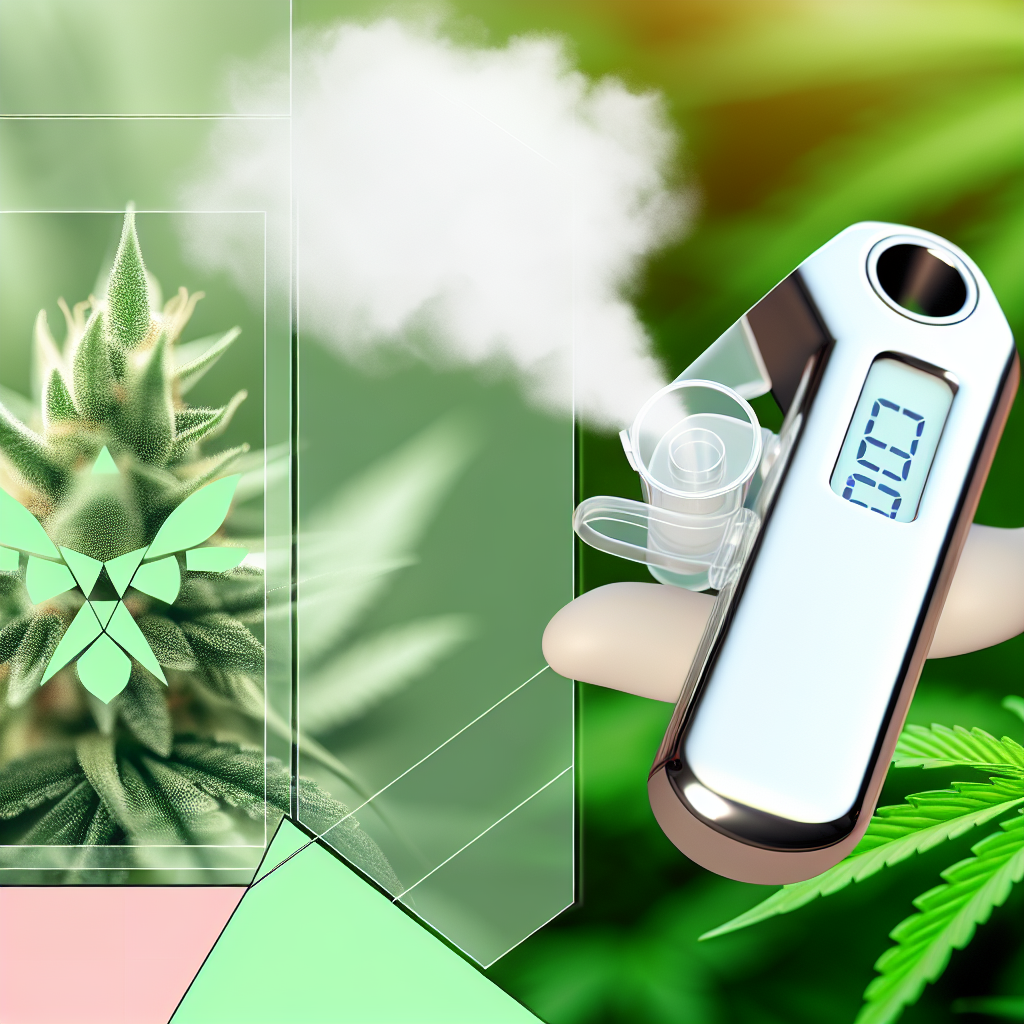# Managing Cannabis Side Effects: Wellness Optimization Strategies
## Embracing Cannabis with Confidence: Why Side Effect Management Matters
As cultural acceptance and legalization of cannabis continue to expand globally, more individuals are turning to cannabis for both medical and recreational purposes. However, with this increased usage comes the need for a deeper understanding of cannabis‘s full spectrum of effects—especially potential side effects. While many benefit from the therapeutic properties of cannabinoids like THC and CBD, some users experience unwanted repercussions such as anxiety, dry mouth, dizziness, fatigue, and cognitive impairment.
This raises a vital consideration for both casual users and professionals alike: How can we optimize cannabis experiences while managing or minimizing potential side effects?
From a wellness perspective, cannabis is a powerful botanical tool, but navigating its safe and effective use calls for a strategic and informed approach. The complexity of cannabis lies in its hundreds of compounds, including cannabinoids, terpenes, and flavonoids, all of which interact uniquely with our individual physiology. Factors such as dosage, method of consumption, cannabinoid profile, and even the user’s genetic makeup contribute to how cannabis affects each person.
For medical patients using cannabis to manage conditions like chronic pain, anxiety, or epilepsy, unwanted side effects can hinder the therapeutic value and discourage adherence to a treatment regimen. Recreational users may also experience diminished enjoyment or unexpected symptoms if side effects aren’t managed properly.
Optimizing wellness while using cannabis means proactively understanding its impact—and applying strategies that address or prevent side effects. These may include titratable dosing, mindful strain selection, consumption method adjustments, hydration, supplementation, diet, and even the incorporation of complementary therapies like mindfulness or physical activity.
In this article, we dive into strategies to help mitigate the most common cannabis side effects and explore cutting-edge research and clinical recommendations that illuminate a path toward optimized cannabis wellness. Whether you are a patient, healthcare professional, budtender, or purely a curious consumer, mastering these strategies ensures safer, more satisfying cannabis experiences—and enables a true wellness-first approach.
## What the Science Says: Studies Supporting Side Effect Management
Scientific research on cannabis has steadily progressed over the last decade as restrictions on cannabis research have loosened. While there’s still a lot to uncover, numerous peer-reviewed studies have illuminated how to manage some of cannabis‘s common side effects effectively.
One foundational text, a comprehensive 2017 report by the National Academies of Sciences, Engineering, and Medicine, titled “The Health Effects of Cannabis and Cannabinoids,” reviewed over 10,000 studies. It concluded that while cannabis use may lead to effects like cognitive impairment and psychosis at high doses, harm-reduction strategies such as vaporization and lower-THC strains are effective in countering those risks ([National Academies Report](https://nap.nationalacademies.org/catalog/24625/the-health-effects-of-cannabis-and-cannabinoids-the-current-state)).
Lowering THC dosage significantly minimizes the likelihood of anxiety and paranoia. A 2012 study in *Drug and Alcohol Dependence* confirmed that low doses of THC reduced anxiety levels, whereas higher doses exacerbated it—affirming the popular therapeutic mantra: “Start low, go slow” ([Source](https://www.sciencedirect.com/science/article/abs/pii/S0376871612001030)).
A key ingredient in balancing cannabis effects is cannabidiol (CBD). A 2010 study in the *Journal of Psychopharmacology* revealed that CBD counteracts THC-induced anxiety, pointing to the value of using THC/CBD-balanced products—especially for beginners and sensitive individuals ([CBD Research](https://journals.sagepub.com/doi/10.1177/0269881108098371)).
Hydration and dietary practices also influence cannabinoid metabolism. Cannabinoids are lipophilic, meaning they are absorbed more effectively in the presence of healthy dietary fats. A study published in the *American Journal of Medicine* noted that cannabis taken with meals rich in good fats may enhance efficacy and reduce side effects ([AJM Study](https://www.amjmed.com/article/S0002-9343(15)01050-X/fulltext)).
Another important consideration is Cannabis Hyperemesis Syndrome (CHS)—a rare condition seen in chronic users presenting with severe nausea and vomiting. Though the exact causes are unclear, genetics and cannabinoid overexposure are suspected. Limiting dosage and rotating strains can help users reduce their risk or alleviate symptoms ([Mayo Clinic Proceedings](https://www.mayoclinicproceedings.org/article/S0025-6196(14)00542-8/fulltext)).
Healthcare professionals increasingly stress the need for personalized cannabis support, including strain tracking, dose monitoring, and professional oversight to ensure users get positive outcomes without the drawbacks.
## Smart Strategies for Minimizing Cannabis Side Effects
Managing cannabis side effects doesn’t mean giving up the plant—it means getting smarter about how you use it. A wellness-based approach helps maximize benefits while reducing discomfort. Here’s how:
– **Start Low and Go Slow**: Always begin with the lowest effective dose. This allows your body to adjust gradually, minimizing unpleasant sensations like anxiety or fatigue.
– **Track Strains and Products**: Keep a cannabis journal noting strain names, cannabinoid profiles, method of consumption, and any side effects. Over time, this empowers you to discover your personal favorites and dodge troublesome experiences.
– **Choose Balanced Cannabinoid Profiles**: Products with both THC and CBD offer synergistic benefits and smoother psychoactive effects. Especially beneficial for those sensitive to THC-induced anxiety or dizziness.
– **Hydration & Nutrition**: Drink water before, during, and after cannabis use to combat dry mouth and support overall metabolism. Consuming healthy fats can improve absorption and reduce digestive side effects.
– **Switch Up Your Methods**: Consider using a vaporizer or tincture instead of smoking, both of which offer improved control over dosage and onset time.
– **Be Intentional with Your Setting**: Consume cannabis in calm, familiar environments to avoid overstimulation and manage anxiety more effectively.
– **Mindfulness & Grounding Techniques**: Incorporate meditation, deep breathing, or light stretching to stay grounded and present, helping to dispel negative emotions that may arise.
– **Leverage Professional Help**: Medical users benefit greatly from working with cannabis-literate clinicians who can tailor guidance based on medical needs, drug interactions, and ongoing results.
## A Wellness-First Path to Better Cannabis Experiences
Optimizing your cannabis experience starts with understanding its nuances. Whether you’re a medical patient seeking therapeutic relief or a recreational user chasing relaxation and creativity, unwanted side effects can quickly derail your efforts.
Using evidence-based strategies—such as adjusted dosing, mindful product selection, supportive nutrition, and grounding practices—helps cultivate a healthier, more enjoyable relationship with cannabis. Embracing a wellness-forward mindset empowers you to harness cannabis‘s potential safely while sidestepping its pitfalls.
With growing research and advanced clinical practices, integrating plant-based medicine into your routine has never been more approachable or effective. Be intentional, stay informed, and engage with cannabis in a way that aligns with your overall well-being.
Summary:
As cannabis use continues to rise, managing potential side effects is crucial for optimizing wellness. This article explores evidence-based strategies to minimize common issues like anxiety, dizziness, and cognitive impairment. Key approaches include titratable dosing, balanced cannabinoid profiles, proper hydration and nutrition, and the incorporation of mindfulness techniques. By embracing a wellness-first mindset, users can harness the benefits of cannabis while mitigating unwanted side effects.
References:
– [The Health Effects of Cannabis and Cannabinoids](https://nap.nationalacademies.org/catalog/24625/the-health-effects-of-cannabis-and-cannabinoids-the-current-state)
– [Low-Dose THC Reduces Anxiety](https://www.sciencedirect.com/science/article/abs/pii/S0376871612001030)
– [CBD Counteracts THC Effects](https://journals.sagepub.com/doi/10.1177/0269881108098371)
– [Dietary Fats and Cannabinoid Absorption](https://www.amjmed.com/article/S0002-9343(15)01050-X/fulltext)
– [Cannabis Hyperemesis Syndrome](https://www.mayoclinicproceedings.org/article/S0025-6196(14)00542-8/fulltext)




